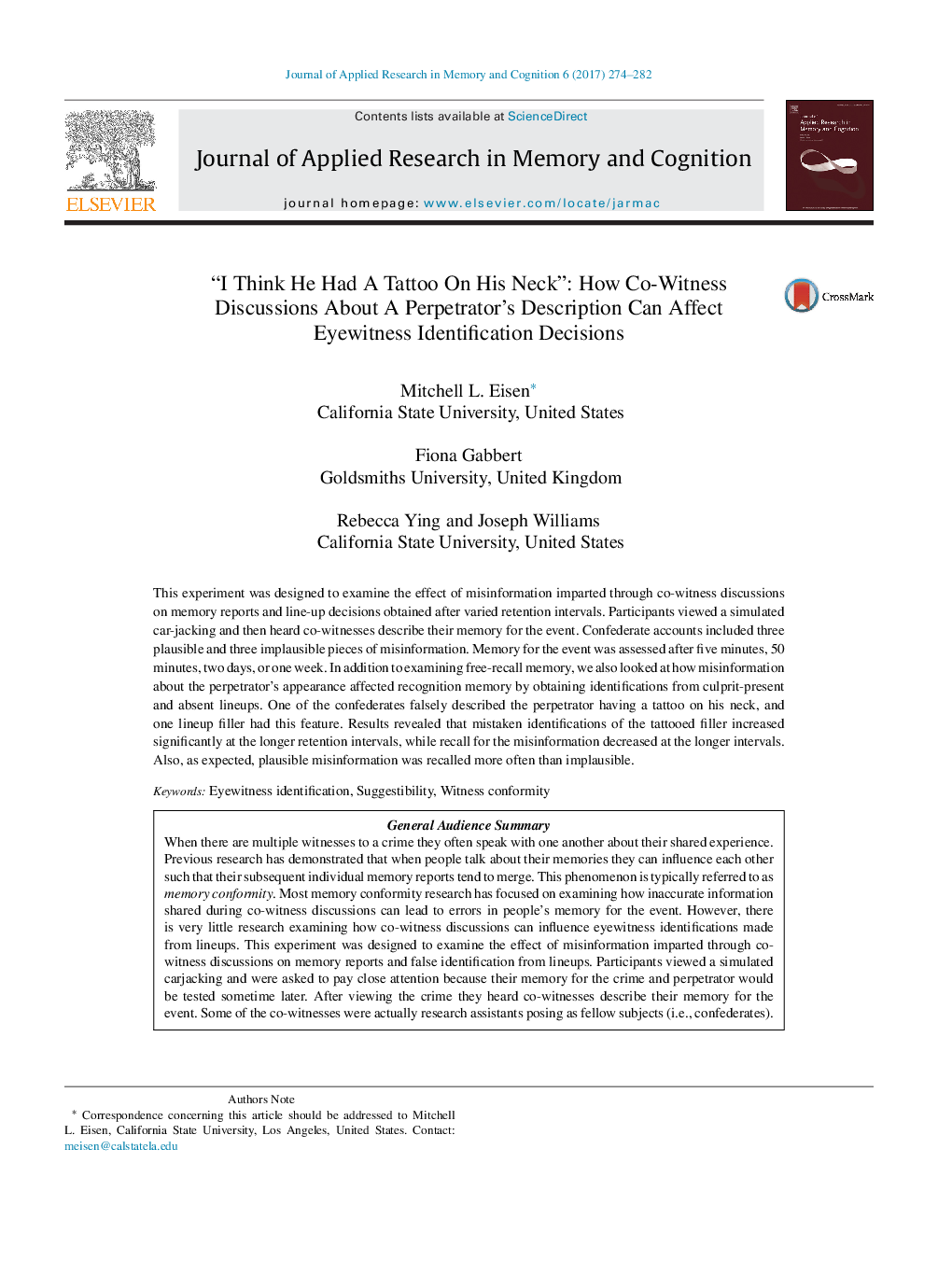| Article ID | Journal | Published Year | Pages | File Type |
|---|---|---|---|---|
| 5033968 | Journal of Applied Research in Memory and Cognition | 2017 | 9 Pages |
This experiment was designed to examine the effect of misinformation imparted through co-witness discussions on memory reports and line-up decisions obtained after varied retention intervals. Participants viewed a simulated car-jacking and then heard co-witnesses describe their memory for the event. Confederate accounts included three plausible and three implausible pieces of misinformation. Memory for the event was assessed after five minutes, 50 minutes, two days, or one week. In addition to examining free-recall memory, we also looked at how misinformation about the perpetrator's appearance affected recognition memory by obtaining identifications from culprit-present and absent lineups. One of the confederates falsely described the perpetrator having a tattoo on his neck, and one lineup filler had this feature. Results revealed that mistaken identifications of the tattooed filler increased significantly at the longer retention intervals, while recall for the misinformation decreased at the longer intervals. Also, as expected, plausible misinformation was recalled more often than implausible.
